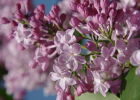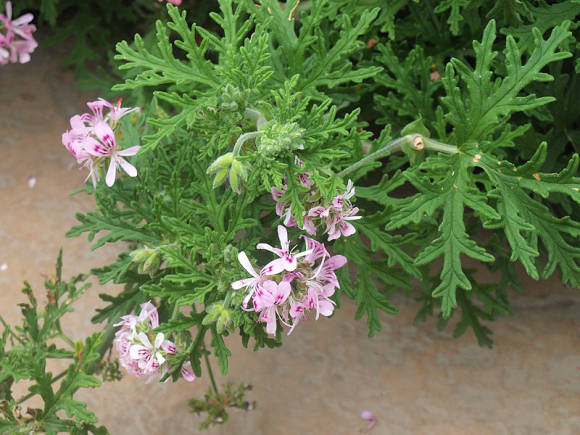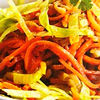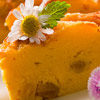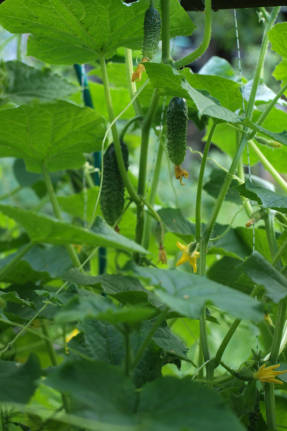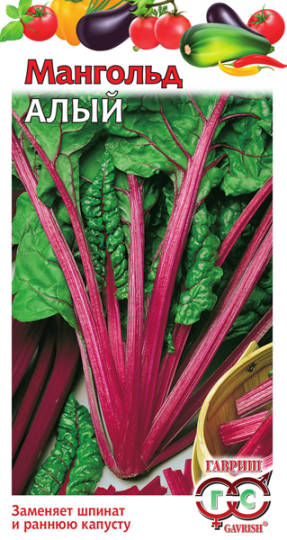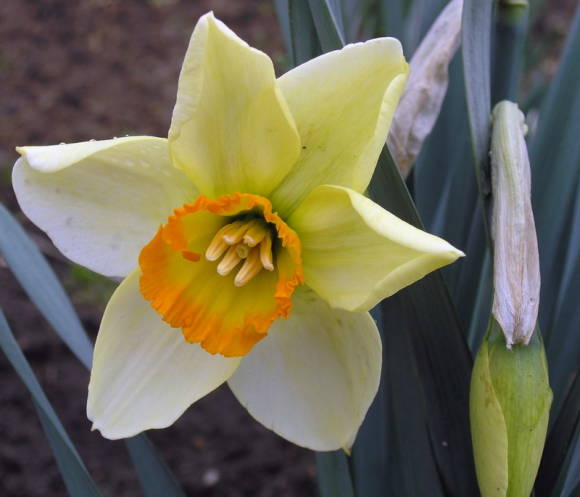
Continuation. The beginning is in the article Sage and salvia.
As part of the vast genus Salvia, or sage (Salvia), very few annual and biennial species. However, due to tropical and subtropical origins, a number of perennial and subshrub species in temperate climates are also grown as annual crops. In order for them to bloom, it is necessary to grow them through seedlings.
Salvia sparkling, or shiny(Salviasplendens) - by nature, a semi-shrub, the stems of which are woody in the lower part, at home in Brazil it reaches a height of 1 m.It was introduced into culture in Europe at the beginning of the 19th century. The plant is not frost-resistant, so at first it was grown as a greenhouse, and only later they guessed to sow it as an annual.
 |  |
Stems branch from the base, more or less pubescent. Leaves are dark green, oval, pointed, 5-7 cm long, dentate or crenate along the edge. Flowers are arranged in 2-6 whorls, usually open simultaneously, forming an inflorescence up to 20 cm long. The color effect is given by bright red (in species plants) bracts, which are up to 1 cm long, cups up to 2 cm long and corollas up to 5 cm long.

It is one of the best plants for patterned flower beds, carpet parterres and flowerpots, often used in urban landscaping. Its glowing flowers go well with seaside cineraria, maiden feverfew, broom cochia. The popularity of the plant spurs the efforts of breeders. From varieties with white, pink, purple flowers, wonderful compact densely leafy varieties with a height of 25-50 cm of various colors have been bred, salmon colors and even two-color ones have appeared - scarlet with white shrieks, coral with white specks. F1 hybrids were obtained, characterized by strong growth, high inflorescences, and resistance to rainy weather.
 |  |
Salvia bright red (Salvia coccinea) very similar to brilliant salvia. It is a Mexican plant that has naturalized throughout South and Central America in the southern states of the United States. In Europe, it has been cultivated for more than two centuries, in the mildest regions it overwinters under mulch, therefore it has gained popularity there. In our cold climate, it can only grow as an annual, but, of course, it is inferior in splendor to the glittering Salvia, therefore, it is practically not common.
It is a semi-shrub 50-70 cm tall, with ovate-oblong pointed leaves, pubescent below with white hairs. Inflorescences are unbranched, loose, up to 30 cm tall. Whorls consist of 4-8 flowers with a red corolla.
The most famous red variety is rich in flowers. LadyinRed, the variety has an interesting color CoralNymph - with dark cups, white tube and coral corolla limb.
 |  |
Mealy salvia (Salviafarinaceae) grows wildly in Mexico and Texas. In North America it has been cultivated since the 19th century, in Europe it has become widely known only in the current millennium.
It is a tall plant, up to 1 in height, grows up to 60 cm in width. Stems are straight, branched, densely covered with hairs, densely leafy. Leaves are dark green, about 8 cm long, oval or linear-lanceolate. The inflorescences are dense, reminiscent of lavender inflorescences, 15-30 cm long, consist of whorls of 8-16 flowers with grayish-white calyxes about 1 cm long. Corolla about 1.5 cm long, with a wide lower lip, blue, violet or purple. Inflorescences are densely pubescent, including the corolla of flowers, for which this salvia was named mealy.
Where winter temperatures do not drop below -14 degrees, this plant is perennial. In colder climates, it is grown as an annual.
Species plants are much taller than varietal plants, which, as a rule, do not exceed 50 cm in height. Mainly grown varieties:
- Circus - with white flowers and grayish-white stems;
- Victoria - about 50 cm, with purple-blue stems and flowers;
- Varieties WhiteVictoria and BlueVictoria have, respectively, white and purple-white flowers and stems, 35 cm high.
- Strata - up to 40 cm, with silvery-white stems and cups, against which blue corollas stand out in contrast;
- Unschuld - with silvery-white stems and corollas.
There are often paint mixtures on sale that allow you to create self-sufficient flower beds and borders.

Salvia rejected (Salvia patens) was found in Mexico in 1838, widely grown, for example, in England. There this plant is perennial (winter-hardy up to -12 degrees), and in our country it is grown as an annual. The renowned British gardener Graham Stuart Thomas considers it "the best cultivated plant."
Plant up to 75 cm tall, branched stems, with deflected lateral shoots, sticky to the touch. Leaves are numerous, up to 20 cm long, triangular or spear-shaped, sometimes oval, crenate along the edge, pale green. The flowers are large, 5 cm long, double-lipped, wide open, with a short tube and a helmet-like upper lip, sitting opposite in pairs, forming a high inflorescence.
It has varieties with larger, up to 8 cm flowers, blue and white, for example:
- Blue angel - a variety with larger, up to 6 cm, flowers of a luminous ultramarine color in long ears;
- Cambridge blue - up to 75 cm tall, with blue flowers.
For flowering to begin in early summer, seeds are sown in early spring for seedlings. The plant has a feature that is not characteristic of other salvia - it has tuberous rhizomes that can be stored in a frost-free room in the sand in winter, like dahlias. In spring, for early flowering, they are driven out in pots and transplanted into open ground. Our plant is rare.
Salvia Remera(Salvia roemeriana) is another North American species that has just begun to appear on the market. It grows in Mexico, as well as the American states of Texas and Arizona. In Europe, it has been cultivated since the 19th century as a semi-hardy annual, which is able to tolerate small subzero temperatures (up to -12 degrees) and sometimes hibernates there.
This compact and neat plant is 30 cm high. Forms numerous dark purple stems, which are crowned with thin inflorescences 10-20 cm long. In a whorl there are only 2-4 tubular flowers 3 cm long. Flowers are from bright red to dark cherry-red, with dark calyxes. The leaves are rather small, grayish-green, round or heart-shaped, wavy along the edge.
- Hot trumpets - variety 15-30 cm tall, with scarlet flowers, purple calyxes and stems.
The plant propagates easily by seeds, blooms quickly and stands in bloom until autumn. Its only condition is good drained soil.
Salvia green, or variegated (Salvia viridis) on sale under the name salvia horminumova, or horminum(Salvia horminum), which belongs to its brightest variety. It is the only annual species native to Southeast Europe, North Africa and West Asia, along the Mediterranean Sea. As a cultivated plant, it was described by the English botanist John Gerard back in 1596. At first, this slightly aromatic plant was used as a culinary and cutting plant, alive and dried. All parts of the plant have aroma: the leaves were used for salads, soups and other hot dishes, and together with the seeds - for flavoring liqueurs, essential oil - in the production of beer and wine.

The decorative effect of the plant is not given by flowers, but by brightly colored bracts. It is a true annual up to 60 cm tall, with branched, pubescent and glandular stems, oval or oblong, crenate along the edge of the leaves about 5 cm long. The flowers are small, up to 1.5 cm, white, purple or purple, 4-8 in false whorls, forming apical racemes up to 30 cm long. Under the whorls there are large "paper" bracts of white, pink, blue or purple color with darker veins. Flowering begins in mid-June, but the bracts retain their color until autumn. Color mixes are usually sold and the plants tend to be shorter in height. This is very valuable as tall varieties can lodge.
Reproduction
Annual salvias are propagated by seeds, which must be sown for seedlings from late February to early March, since they bloom no earlier than 3 months after sowing.
Seeds are hardly embedded in the substrate and germinated in the light at a temperature of + 22 ... + 25 ° C, after the emergence of shoots, the temperature is reduced by a couple of degrees. Salvia sparkling and bright red sprout 7-12 days, salvia rejected - 4-7 days.
The humidity is kept moderate so that the seedlings do not rot. They feed little by little, as small plants are sensitive to excess salts. Night temperatures in the process of growing seedlings should not fall below + 13 ... + 16оС. Before planting in the ground, the plants are hardened. They are planted when the danger of late spring frosts has completely passed - the plants absolutely do not tolerate sub-zero temperatures. When planting, maintain a distance of 20 cm.
Since many annual salvias are semi-shrubs by nature, their flowering can be extended by transplanting them into pots in the fall. They will decorate with themselves, for example, a glazed loggia. The temperature of the content should be within + 15 + 22 ° C. However, in order not to introduce pests on indoor plants, the leaves and stems of salvia should first be washed with water and treated with an insecticide.
Continuation - in the articles:
Sage: a little about new products and exotics
Sage in landscape design
 |  |
